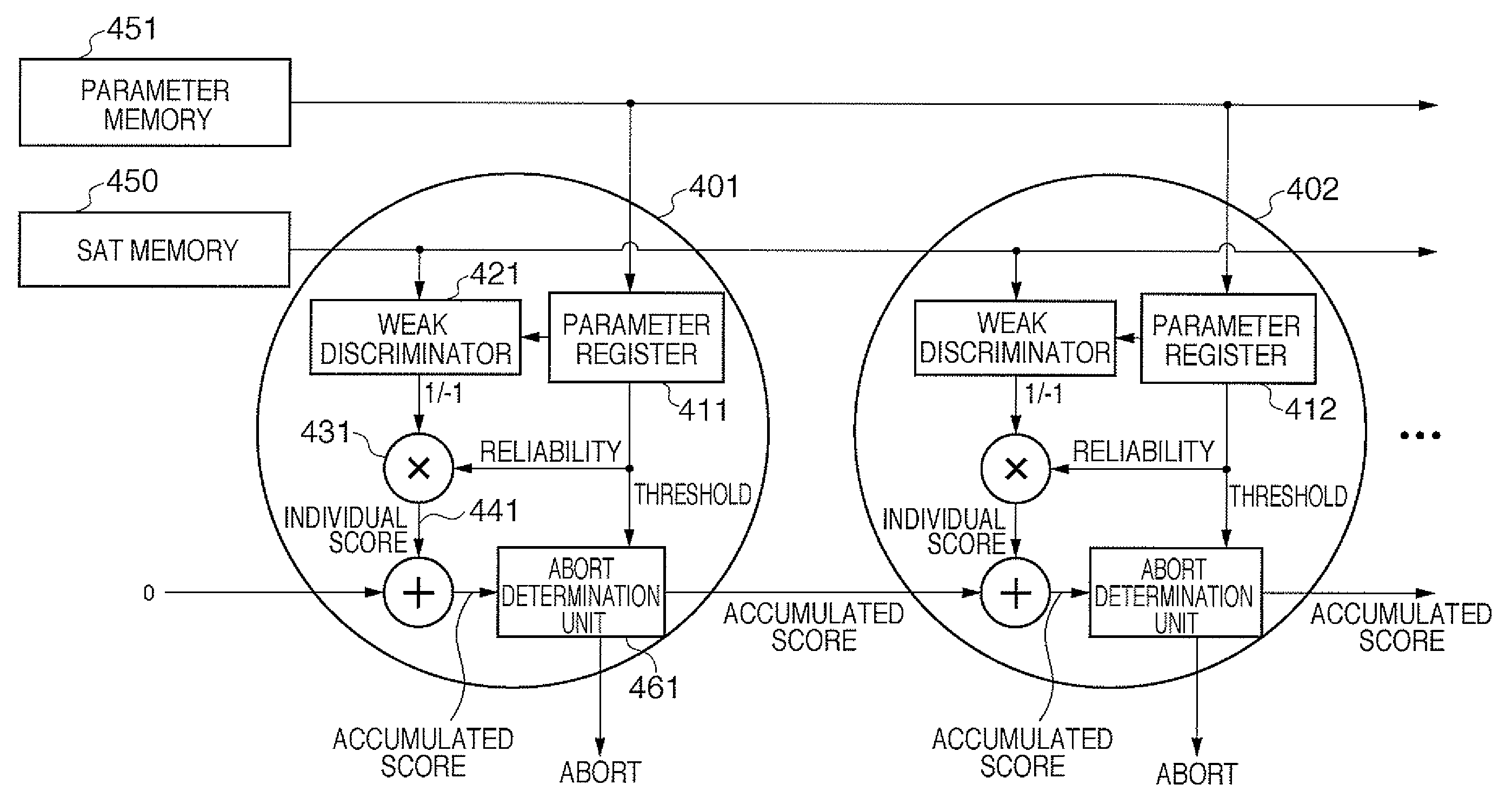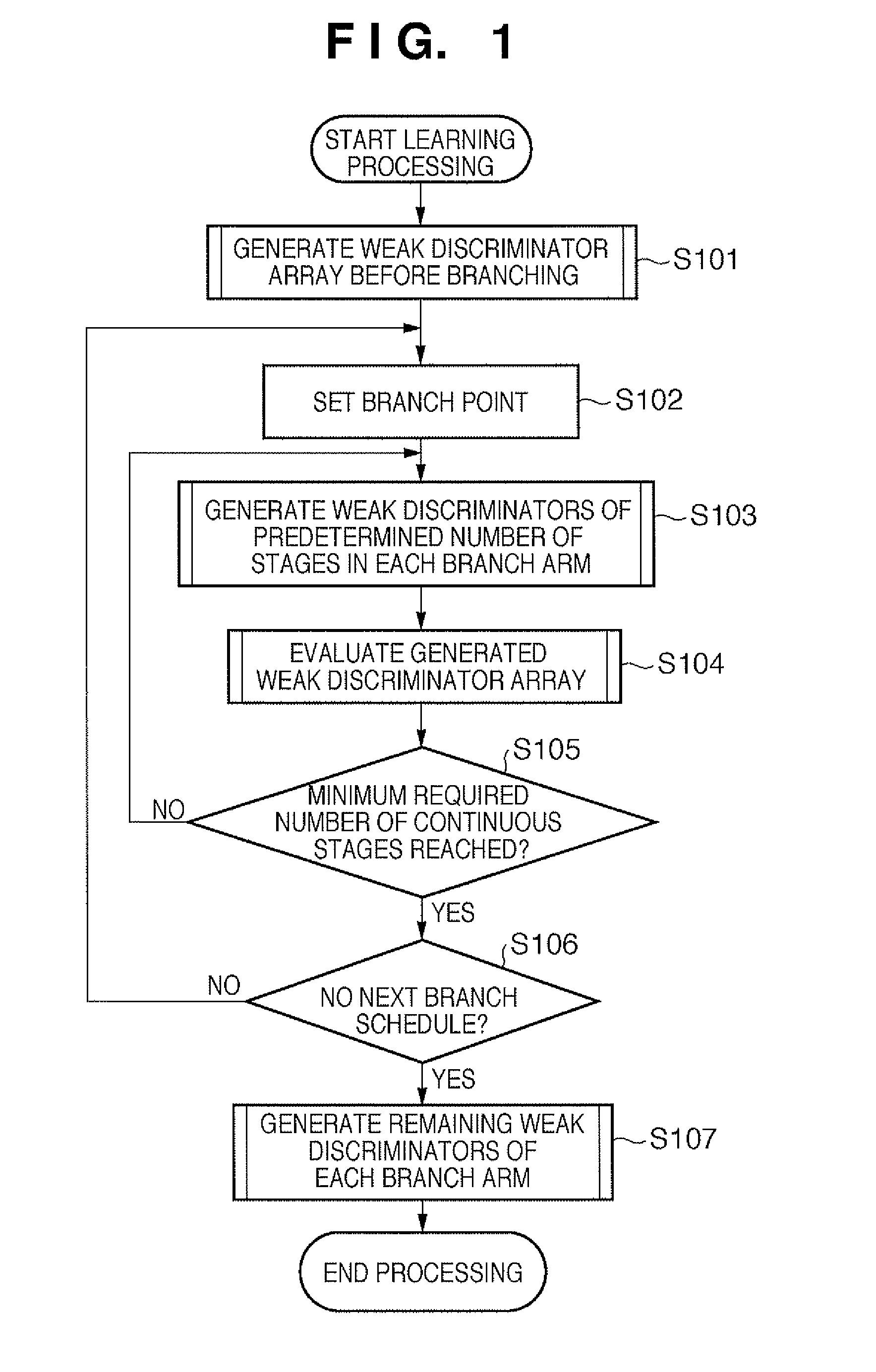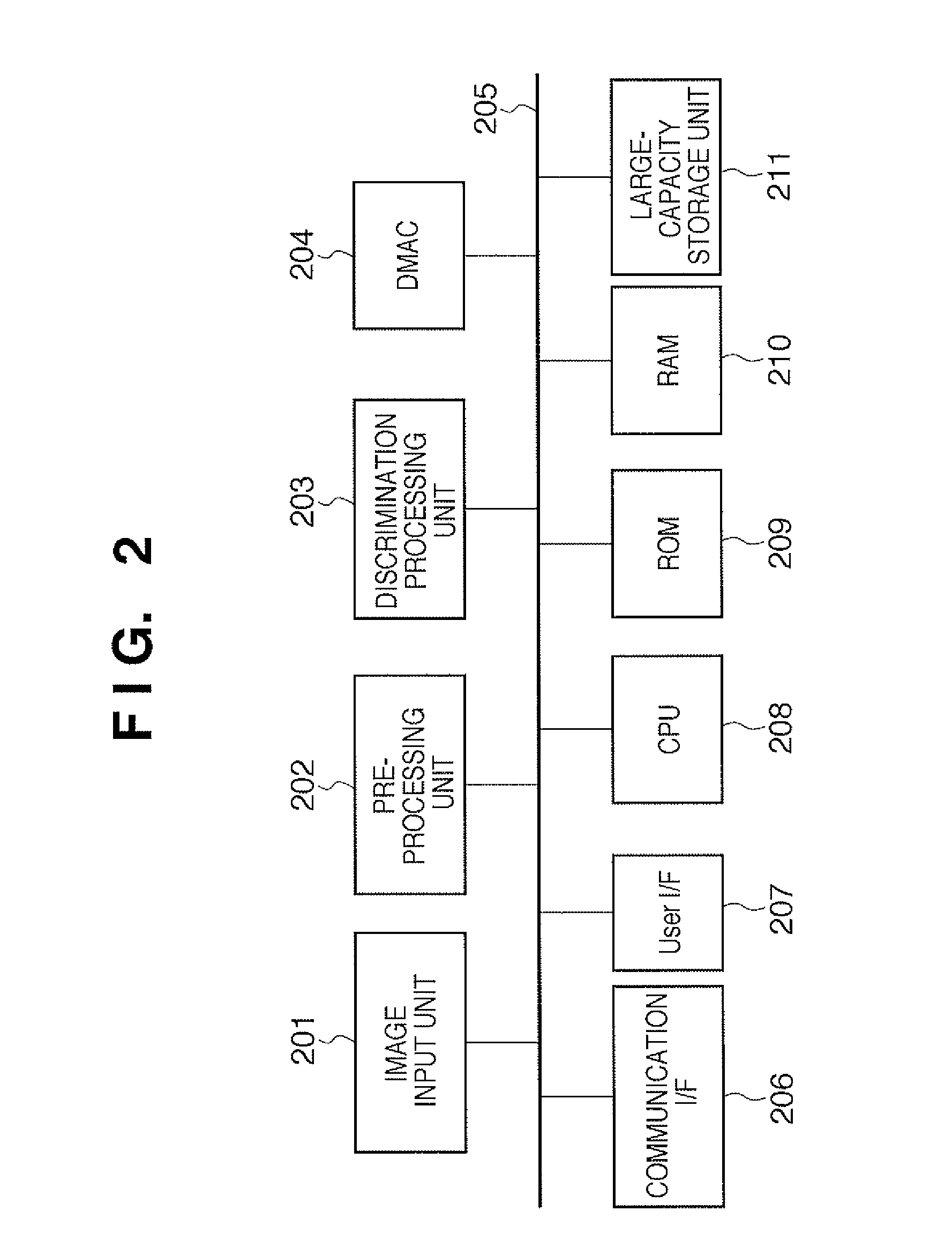Pattern identification unit generation method, information processing apparatus, computer program, and storage medium
a technology of information processing apparatus and pattern identification unit, which is applied in the direction of electric digital data processing, instruments, computing, etc., can solve the problems of increasing processing time, deteriorating detection precision, and method cannot cope with depth rotation
- Summary
- Abstract
- Description
- Claims
- Application Information
AI Technical Summary
Benefits of technology
Problems solved by technology
Method used
Image
Examples
first embodiment
[0069](Explanation of Block Diagram)
[0070]FIG. 2 is a block diagram showing the arrangement of an information processing apparatus according to an embodiment of the present invention. An image input unit 201 has a function of fetching input image data which are to undergo pattern identification processing, and learning sample image data into the apparatus. The image input unit 201 includes an image sensing device configured by, for example, an optical system, a photoelectric conversion device such as a CCD sensor or the like, a driver circuit, an AD converter, a signal processing circuit that executes various kinds of image processing, a frame buffer, and the like. Or the image input unit 201 includes an I / F device which shares hardware with a communication interface (I / F) 206 (to be described later), and receives image data from an external apparatus via a predetermined communication route such as a network or the like connected to the I / F.
[0071]A pre-processing unit 202 executes v...
second embodiment
[0200]In the first embodiment, the method of determining the minimum required number of non-branching continuous stages using the difference values of accumulated scores has been explained. In the second embodiment, a method of determining the minimum required number of continuous stages based on selection error ratios of a branch upon inputting evaluation data will be explained.
[0201]In this embodiment, in order to avoid a repetitive description with the first embodiment, only differences from the first embodiment will be described. The sequence of the basic processing for advancing learning while evaluating generated weak discriminator arrays of respective branch arms is the same as the first embodiment shown in FIG. 1. In this embodiment, the generated weak discriminator evaluation processing described in step S104 is executed, as shown in FIG. 20.
[0202]In the evaluation processing in FIG. 20, as an evaluation data set, a face data group having variations of combinations of class...
third embodiment
[0210]The first and second embodiments have explained the case in which branch selection is made using accumulated score values in predetermined stages after branching. However, another branch selection method may be used.
[0211]In FIG. 22, reference numeral 2201 denotes a branch selection discriminator in a certain branch. A pattern identification unit selects an arm to be left in each branch based on the branch selection discrimination result output from the branch selection discriminator 2201.
[0212]The branch selection discriminator 2201 selects a branch direction to have, as inputs, feature amounts calculated by respective nodes of a weak discriminator array which is to undergo branch selection processing. This discrimination can use known discrimination processing such as linear discrimination analysis, SVM (Support Vector Machine), and the like, and parameters required for these identification methods need to be learned and calculated in advance.
[0213]An amount (a feature amoun...
PUM
 Login to View More
Login to View More Abstract
Description
Claims
Application Information
 Login to View More
Login to View More - R&D
- Intellectual Property
- Life Sciences
- Materials
- Tech Scout
- Unparalleled Data Quality
- Higher Quality Content
- 60% Fewer Hallucinations
Browse by: Latest US Patents, China's latest patents, Technical Efficacy Thesaurus, Application Domain, Technology Topic, Popular Technical Reports.
© 2025 PatSnap. All rights reserved.Legal|Privacy policy|Modern Slavery Act Transparency Statement|Sitemap|About US| Contact US: help@patsnap.com



